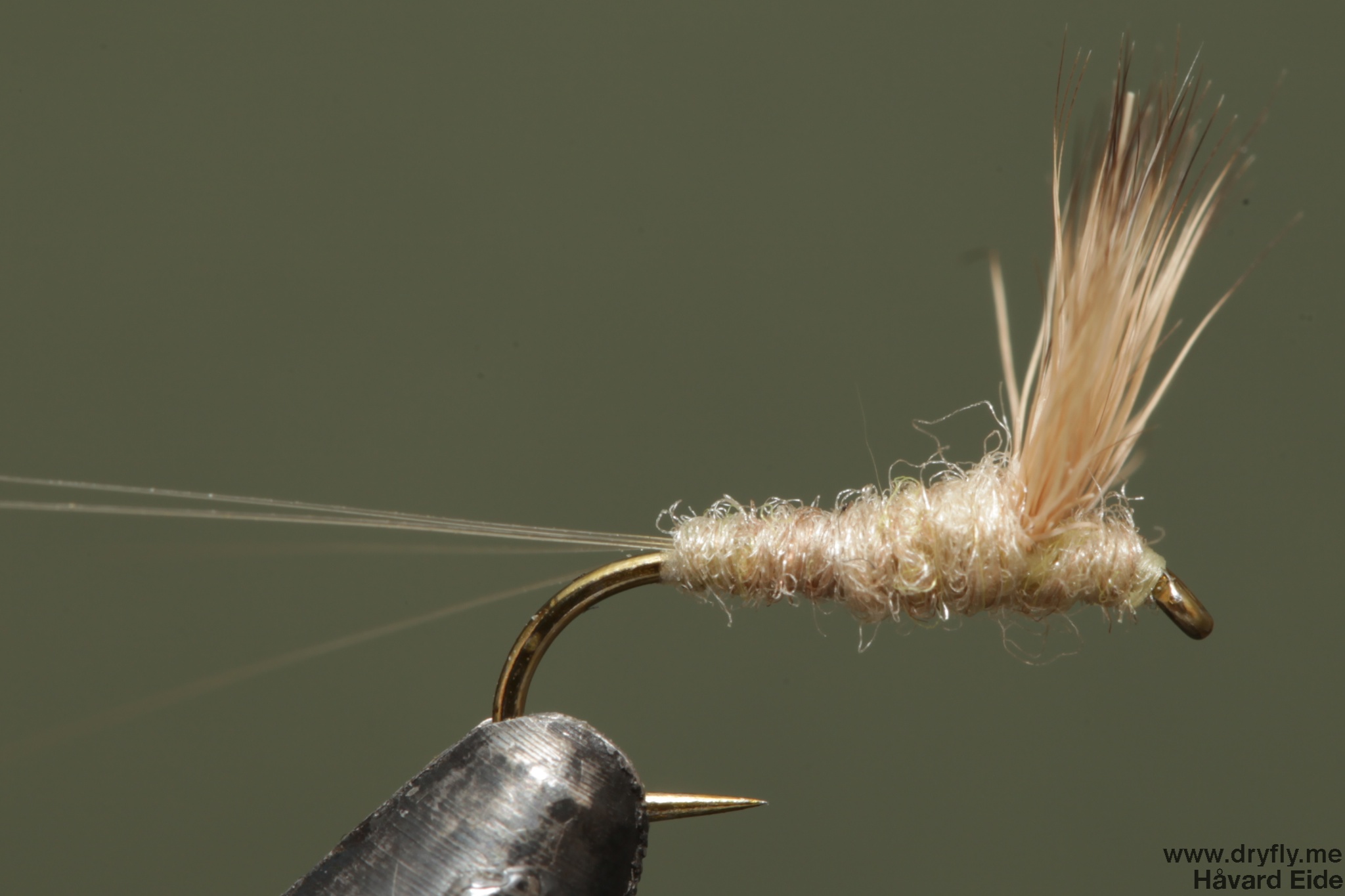Not that I don't carry any, I do, but as Silver pointed out and is visible in the above image, I regard parachute flies as defective design as mayfly legs protrude from the lower portion of the thorax, not from above as in a parachute. The Al Caucci/Bob Nastasi developed Comparadun...no doubt owing some homage to the Fran Betters Usual...is a superior design and multi faceted as its splayed coastal deer hair wing suggests as sprawled or spent wing, the fibers are the length of a wing not legs, suggesting not quite upright yet recently emerged duns or possibly a cripple of even spinner, a diversified design that floats well too and is quit visible. I like them tied the original way with as sparse an abdomen as possible and with split micro fibbet tails. I have caught countless trout on Comparaduns in various sizes both east and west and always have a row or two of them in my box.
An application of parachute style hackle I prefer is the emerger suggesting "Quigley Cripple" style and its CDC variants as tied by Rene Harrop. Here, the nymph like body with shuck, sparkle or soft feather fiber like partridge or even marabou tips is undressed while the hackle and deer hair post is treated with silicone flaotant. A very effective in and beneath the film imitation and very productive to fish early in a hatch.
Dillon mentioned Thorax Duns which owe their origin all the way back to F. Halford on the chalk streams in the late 1800's and popularized on our side of the pond by Vince Marinaro and latter, the Henry's Fork tiers like Roger Keckheisen. When trout are sipping duns on clear technical water, the thorax dun has no equal, it is the sparsest, most natural silhouette and accurate meniscus footprint fly there is. I prefer microfibbet tails to natural hackle.
A newer design that Dillon ties and I fish is the stacked hackle style which can be tied either as an emerger or dun and makes a fine crumpled wing spinner too.
I carry all the above and more but by far most critical is drag free and fly first presentation. Zero loops of tippet in front of the fly and zero micro drag. Would you eat a hamburger wiggling across your plate?



